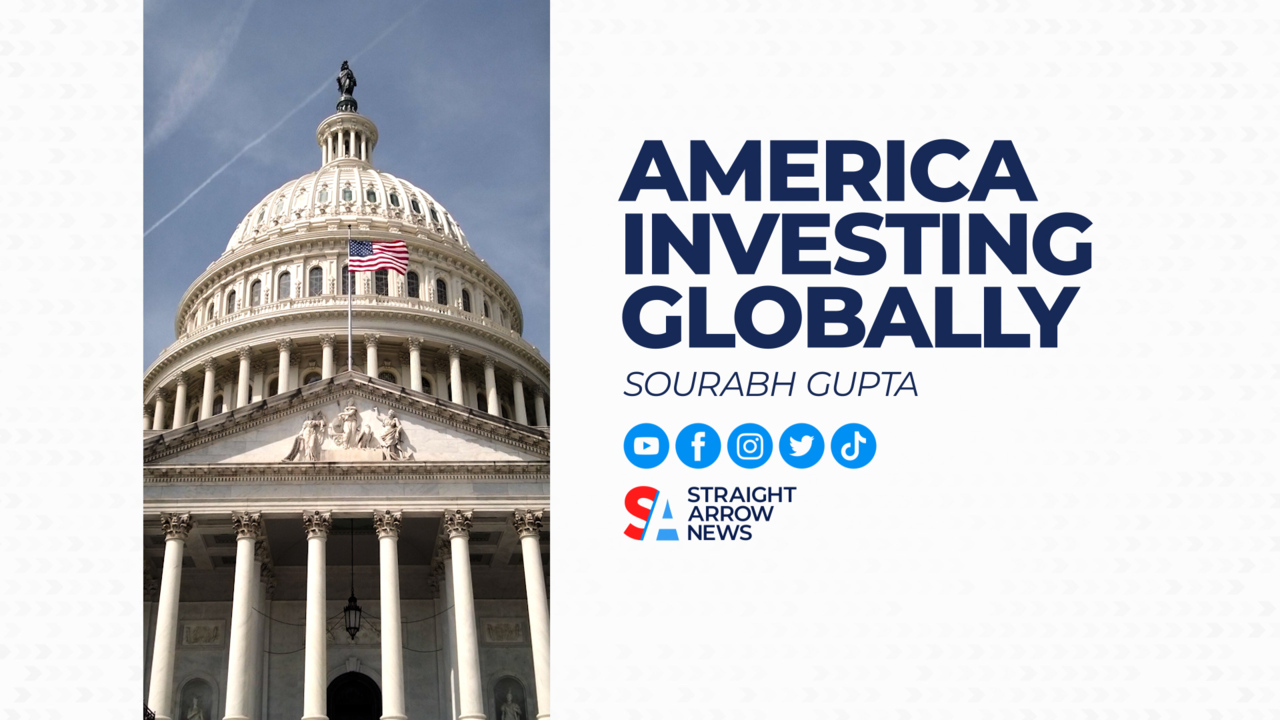
In front of the beautiful backdrop of the Bavarian Alps, G7 leaders announced a new investment plan called the Partnership for Global Infrastructure (PGII). The goal is to invest $600 billion over the next five years in lower and middle income countries around the world, with the U.S. pledging $200 billion.
The ambitious plan includes a $2 billion solar panel project in Angola, a $600 million project for a submarine cable system to connect Singapore and France, and up to a $335 million investment in internet service providers and financial technology companies in Africa, Asia and Latin America.
“I want to be clear, this isn’t aid or charity. It’s an investment that will deliver returns for everyone, including the American people and the people of all our nations,” President Biden said when announcing the program in Germany.
This plan is seen as a rival to China’s Belt and Road Initiative, a very similar international investment plan, which has been happening for a decade, and has greatly increased China’s influence around the world.
Ray Bogan discussed the two rival programs with Sourabh Gupta, a senior policy specialist at the Institute for China America studies.
Ray Bogan
President Biden says this is an investment, it’s not charity. So how can the American people and citizens of all nations expect to see a return on their investment?
Sourabh Gupta
Where they can hope to expect to see a return on their investment is it’s not just government money going in. That’s government money trying to catalyze private investment also, private American investment. But also private sector investment in those countries. And hopefully these investments will help these countries grow. And as these countries grow, A, the hope is that they stay democratic, and B, that they become bigger consumers for American goods including agricultural goods where America is a very dynamic producer and exporter. But this is about helping poor people in developing countries fight their way out of poverty and get richer. Of course, there is the Belt and Road element involved so there is competition with China. But there is intrinsic value in helping poor people get richer because that helps America’s standing in the world too.
Ray Bogan
The Chinese Communist Party does not release exact data and numbers on their Belt and Road Initiative, but analysis from refinitiv shows the valuation of those projects is now at $4 trillion since 2013. How much influence has China gained because of the Belt and Road Initiative projects?
Sourabh Gupta
Well, it has gained quite a lot of influence. I wouldn’t exaggerate that influence because long term infrastructure, development and infrastructure financing, is not an easy game and it has a lot of risks. And we’ve seen some of those risks play out in many developing countries which have been burdened with a lot of debt – infrastructure related debt on large projects which have very long gestation periods. So the upside of that project might be 10 or 15 years down the line but the immediate debt burden is at this point of time. So that has been an issue which has dogged the Belt and Road initiative. But that having been said, in much of the developing world, there is a huge paucity or lack of infrastructure financing. Therefore it is always welcome in poor countries to place hard investment. Investment in power generation. Investment in roads. And they have not been able to do that of their own accord.
China has assisted them because China has been able to do infrastructure well at home, even though some of these might be above budget. And we have to remember one thing which will resonate with an American audience, and that being at the and after World War II, this is a role that America had played. America had put out a lot of capital exports. America had provided technology. America provided managerial skill. This helped fire up the economic engines of many poor countries and then America kept its markets open so that they could export back to America. That was the cyclical pattern by which a lot of poor countries particularly in Asia got rich. It’s China now trying to do the same thing – provide that infrastructure, provide financing, provide that managerial talent, help fire up the economic engines in these countries. And hopefully China will also become a big importer of the goods that they produce and export. And that is how hope prosperity is created. Therefore, I would say this is not a zero sum competition necessarily between the US and China. There’s ample space in the infrastructure development area for many parties to jump in. But I think one needs to do these projects cautiously because they can create large debt burdens and headaches down the line. I think that is the fundamental challenge, rather than America versus China.
Ray Bogan
There are four key priorities in the Partnership for Global Infrastructure: climate and energy security, digital connectivity, health and what they call health, security, and gender equality and equity. We just mentioned the estimates of $4 trillion, for China’s Belt and Road Initiative, is this $600 billion investment from PGI enough to even make an initial dent in the Belt and Road Initiative and China’s head start on this?
Sourabh Gupta
Yes, I think it can make a dent in it. But the point is that $600 billion needs to come to fruition. We’ve had a lot of fancy initiatives which have been named. We had Built Back Better at the G7 last year, we’ve got the Blue Dot Network which the Trump era government had put out, the Europeans have the Global Gateway scheme. You know at the end of the day none of these really panned out. There was a lot of talk but none of the money came forward. Because this really requires patience, resolve and purpose to do these on long horizons. And so if that $600 million does materialize, and some of it will because some of it is just pure grant money, it’s not about catalyzing a public sector. Grant money is more easily dispensed. But if those projects are done well, smartly, like say that cable between France and Singapore, these obviously have enormous potential to transform economies in poor countries. But that money needs to be on the table first. I’m not sure at the end of the day that it’s going to be on the table.
Ray Bogan
According to the White House, internationally, infrastructure has long been underfunded. They put the number at $40 trillion in estimated need in the developing world and say that need is only going to increase because of population growth and climate change. So if $40 trillion is still needed in international investment for middle and lower income countries, are we just in the infancy of these global superpowers trying to invest in these countries to try to gain influence?
Sourabh Gupta
Up to a point, yes. The amount of under financing is tremendous, it’s huge. And I don’t think anybody anticipates that any of the major powers or even if all the major powers come together that on a good day we will be anywhere close to hitting those targets. So the 40 trillion is an aspirational number and the World Bank and others have put out other numbers also, which are as gargantuan. But the idea is to do good projects which have useful local value. And yes, at some level there is a degree of competition. Because understand out here what’s happening, it’s not just happening in poor developing countries. There is this transition from bricks and mortar businesses to work to operating and succeeding in the virtual, digital world. That transformation needs to happen. And that transformation is happening slower in many developing countries simply because they don’t have the capacity to make those investments. Think of another huge transition, which is little transition to becoming more climate conscious and in renewable energy. And just in terms of green tech and green hardware. That’s again a huge transformation over multiple decades. And that will require thorough supply chains which are created and recreated. And there’s ample space for multiple parties to successfully enter the space. And frankly, at some levels, I think there is going to be this direct head to head competition. The Americans will say, ‘Angola you need to strip out Huawei from your telecommunications networks, because we think that is an insecure network and we will provide a better option’. And so there will be some zero sum competition. But as I said, international competition is fundamentally a positive sum.






